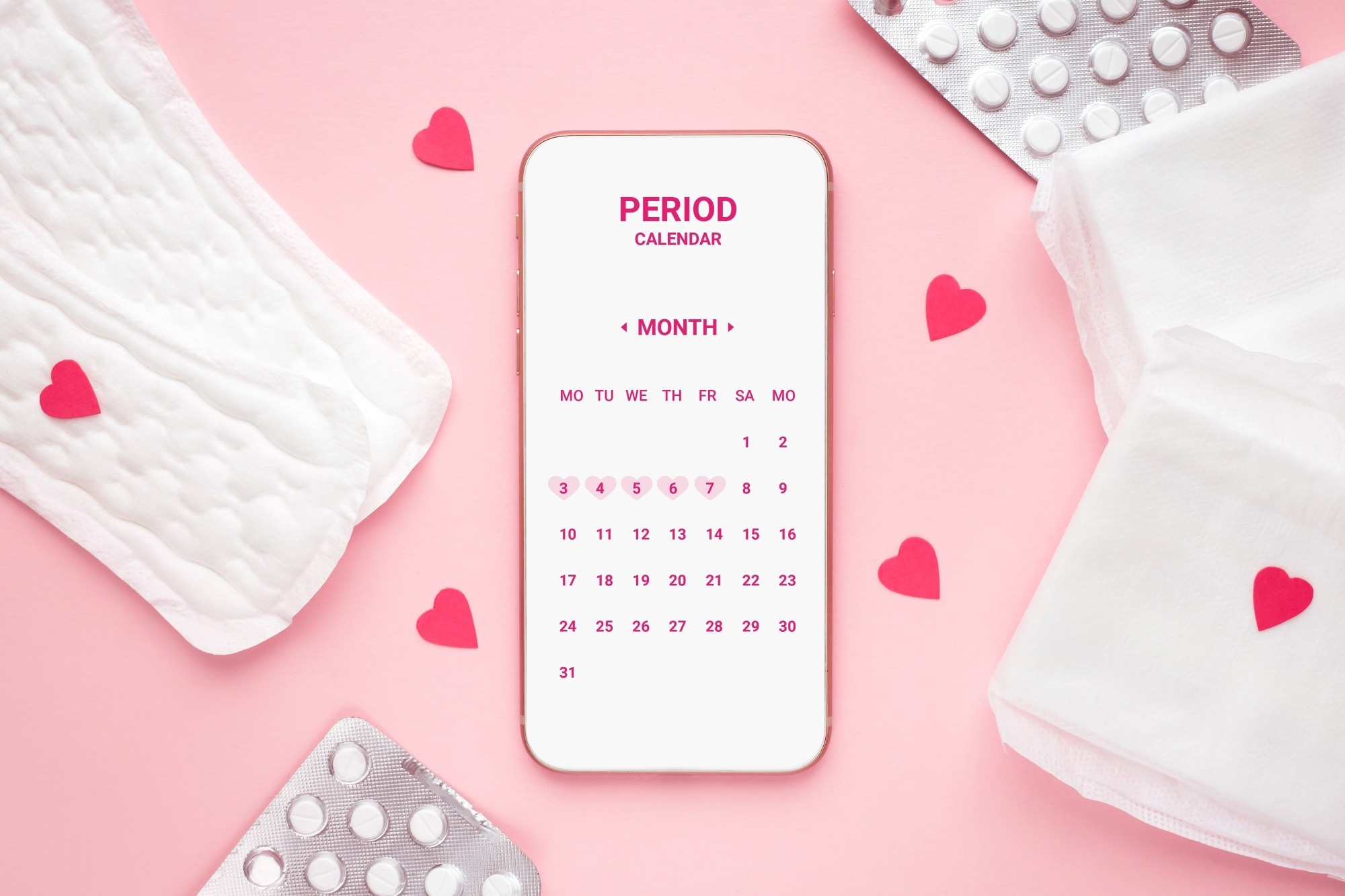Menstrual health is fundamental to women's health. The length of menstrual cycles often indicates abnormalities in this area of women's health, but not enough is known about physiological differences in this parameter.
 Study: Menstrual cycle length variation by demographic characteristics from the Apple Women’s Health Study. Image Credit: E.Va/Shutterstock.com
Study: Menstrual cycle length variation by demographic characteristics from the Apple Women’s Health Study. Image Credit: E.Va/Shutterstock.com
Introduction
The mean cycle length changes in the same individual over the life course, tending to become shorter and more uniform with age until the age of 40-45 years.
However, there were few reports on the association of obesity with cycle length, especially after ruling out confounding factors such as ethnicity, diet, and physical activity.
Earlier research indicates that Asian women have cycles lasting 1-2 days more than White women. Other reports have indicated variations in hormonal levels between different ethnic groups. There was a need for large-scale studies to confirm these findings.
The current study included over 12,000 American women, covering more than 165,00 cycles. The menstrual data came from mobile apps that track the period.
What did the study show?
The researchers found that the mean menstrual cycle length was 28.7 days, with a median of 28 days. There was a long tail on the right side of the frequency distribution chart.
About 5% of women had long cycles, and ~10% had short cycles. The findings of this study showed that age, obesity, and ethnicity were the three most significant contributors to differences in the mean cycle length.
The impact of age on cycle length
The study indicated that menstrual cycles shortened, on average, with increasing age. This finding persisted until the age of 50 years, following which mean length increased with age. That is, above 50 years, women were at eight-fold higher risk for long cycles and four-fold increased risk for short cycles.
As expected, the most uniform cycles were experienced in the age group of 35-39 years. Young women below the age of 20 years, and those between 45 and 49 years, had marked variation in cycle length between cycles, at 50% above that in the 35-39 years group.
Long cycles were almost twice as common in those under 20 and those aged 45-49 years compared to the 35-39 age group. Short cycles were also more than twice as common in the 45-49 age group.
However, those above 50 showed an increase in variability by 200% vs. those aged 35-39.
Ethnicity and cycle length
When analyzed by ethnicity, cycles were about 1.5 days longer among Asian participants but 16 hours longer for Hispanics.
Asian and Hispanic women were at 40% and 26% higher risk for long cycles than White women. Asian and Hispanic women also tended to have more variable cycle lengths, about 10% higher than White women.
Obesity and cycle length
Women with a very high body mass index (BMI) of 40 kg/m2 or more had longer cycles by about 1.5 days than those whose BMI fell in the normal range (~18-25 kg/m2).
Overweight and mildly obese women had 0.3 and 0.5 days longer cycles, while obese women had bikes longer by 0.8 days.
Mild, moderate, and severe obesity was linked to increased odds of long cycles, by 30% each, among Asians and Hispanics.
The link between obesity and longer cycles was most evident in White and Hispanic women, especially the latter, but became apparent in Black women only when examining the 75th percentile. Interestingly, Asian women did not show this association.
Along with longer cycles, obese women tended to have more variable cycle lengths. The risk for variability was increased by ~10% with mild or moderate obesity but almost 30% higher among those with severe obesity.
Irregular cycles were likely with Asians and Hispanics, whose chances were ~45% and 30% higher than White women.
The researchers did not pick up any traces of changes in cycle length with a history of coronavirus disease 2019 (COVID-19) infection or vaccination.
What are the implications?
We confirm previous observations of changes in menstrual cycle pattern with age across reproductive life span and report new evidence on the differences of menstrual variation by ethnicity and obesity status."
The study included females who may or may not have sought to conceive and data on various variables such as smoking, physical activity, socioeconomic status, stress, and BMI.
Earlier studies have shown some evidence that anti-Mullerian hormone levels, associated with ovarian reserve, are higher among Hispanics and Asians when compared to White women of the same age group.
Interestingly, such differences persist after controlling for other hormones and physical activity, stress, and socioeconomic status.
This points to the need to identify and measure other variables that affect the menstrual cycle, provided it is documented that differences in cycle length and regularity impact women's health significantly.
Understanding natural differences in cycle length will improve medical care related to menstrual health while spurring research to identify the factors that promote menstrual irregularity more readily among Asian and Hispanic women.